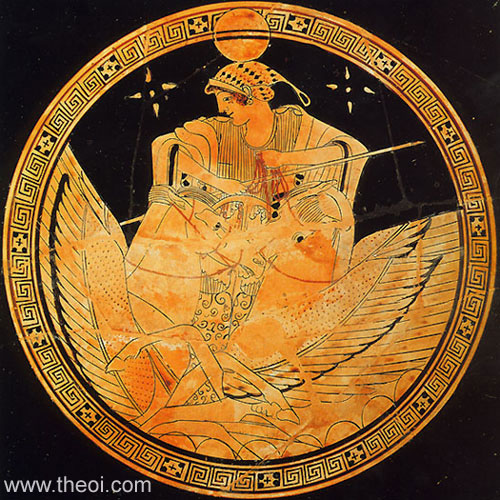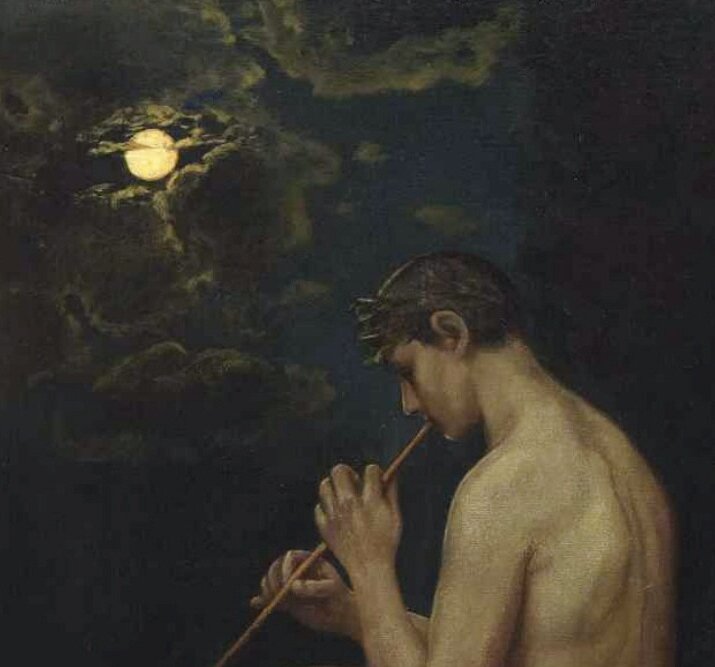Endymion: the dream of a Titaness goddess

One of the odder stories of ancient Greek mythic love accounts, the love between Selene and Endymion is hard to follow at times. But let us try and make some sense out of this otherworldly and bizarre love story which inspired the creation of one of our candles for this year’s Valentine’s Day.
Who was Endymion?
Endymion was a handsome shepherd-prince, and even, some say, a hunter, who was originally from the region of Thessaly. He was a descendant of Aiolos, one of the great sons of Deukalion and Pyrrha who had survived the Great Flood and became the progenitors of the major tribes of the Ancient Greeks.
Endymion had migrated to Elis in the Peloponnese near Olympia where he founded a kingdom. It is unclear as to why, but some say that Zeus had granted him either the choice of his fate or the foreknowledge of his own death, both of which are two iterations of the same thing, as the concepts of fate and death are often equated in Ancient Greek thought
It appears, however, that the ancient sources diverge from each other quite early on in Endymion’s story, and in fact some say that there were two separate characters with this same name, one from the Peloponnese and one from the region of Karia in Anatolia (present-day Turkey).
However, we think that a closer look might reveal a connection between the two characters.
Zeus’s gift
Hesiod mentions that Endymion received the gift from Zeus: ‘(To be) keeper of his own death for his own self when he was ready to die.” [Hesiod, Catalogues of Women Fragment 8, from a Scholiast on Apollonius of Rhodes on Argonautica 4.57; translation by Evelyn-White].
It seems that Endymion was also able to choose his fate and so he chose immortality and youth in eternal slumber.
And Zeus’s gift did work but in a mysterious way.
While he got what the asked for and gained eternal youth, Endymion fell in an eternal slumber. He then made his way over to Mount Latmos in Karia to forever lie asleep in a cave there. This is the Endymion known from the stories attested in Asia Minor.

Endymion sleeping on Mount Latmos, μάρμαρο, 2ος αι. μ.Χ
Different versions of the same story?
The Endymion from the Peloponnese chooses to set up a racecourse for his sons and to give the kingdom to the winner of said race. This is something he chooses to do when his time has come to die, and as the race decides the winner, Endymion fades away from life.
in this version Endymion’s tomb can be found at the place where the race for the crown had been held. Are these two accounts separate? Or can we read here two versions of the same story?
Some scholars have connected the Endymion of Asia Minor to the stories featuring the indigenous Karian god of the moon named Men; while the Endymion from the story with the racecourse is seen as belonging to the Greek tradition.
This question falls on to each of you who read this story to decide if they are one or separate. In any case, we think that the fact that Endymion knew when he was going to die and was thus able to settle his affairs and then travel to Karia and fall into an eternal sleep state could be read as one story.
The way we see it, the two stories do not necessarily contradict each other, especially when Endymion used to travel around from place to place as he was from Thessaly.
The goddess Selene falls in love with the sleeping Endymion
Once asleep in the cave of Mt. Latmos, one night, when the Titaness Selene, the Moon Goddess made her way above the mouth of the cave following her usual nightly course, saw the sleeping form of handsome Endymion she fell madly in love with him.

Αττική ερυθρόμορφη κύλιξ, αποδίδεται στον Βρύγο (500-450 π.Χ)
She was so enamoured by him, mesmerised by the way he loosely held his javelins in his right hand, while his left arm was lifted over his face framing it in lovely abandon, that she could not help but come down to earth in order to kiss his soft cheeks and lie with him.
She loved him so much that she went to him every night since, unable to stay away.
Various poets describe the meeting of the two in the cave of Mount Latmos; some focus on the feelings which the peaceful, sleeping form of Endymion stirs in Selene.
Others describe the mental image crafted by these two, with Selene soundlessly gliding towards her lover leaving a shimmering trail of moonlight behind her, while Endymion’s sleeping form is bathed in her soft glow which more prominently displays his handsome features.
The archetypal fair sleeper

Endymion, Hans Thoma (1839-1924)
However, none of the ancient poets mention anything about the nature of Endymion’s feelings towards Selene, whether or not he even knew he was the object of her affection, and, if so, if he desired her as well.
All we know is that Endymion became the archetypal fair sleeper who is loved from afar and resides in an endless, immortal sleep, a soft smile on his lips as he forever dreams of sweet things.
The story is rife with mystic symbolism which entangles the concept of sleep (another personified entity in Greek mythology, by the name of Hypnos), passionate love, i.e., Eros, and the nightly visits of the primordial being Selene who can only ever love someone when they sleep by nature of her being a goddess of the night
We also think that it is no coincidence that the cave in which Endymion sleeps his eternal sleep is called Latmos, which is linguistically connected to the word lethe, that is, ‘oblivion’. The cave itself, a chthonic, underground space of liminality is featured prominently as the setting of this mystic union.
A fact which showcases the mystical properties of this bizarre love story all the more.
The message of the story
Whether it makes sense or not, the story of Selene and Endymion focuses on the mystical, liminal quality of eros, which, for us humans, is manifested at night and under shelter.
For some it may feel like they are in a perpetual daze, dreaming of their loved one who is closer than they may think;
while for others it might be that they are ensnared by the calming image of their loved one who can soften and soothe their tired hearts. Either way, the story shows one thing very clearly:
that eros has the power to enchant the moon itself and draw her away from her celestial course.
(Ancient Sources: Hesiod, Catalogue of Women Fragments; Pindar, Odes; Apollodorus, Bibliotheca; Pausanias, Description of Greece; Nonnus, Dionysiaca, among others. See theoi.com for more information.)

